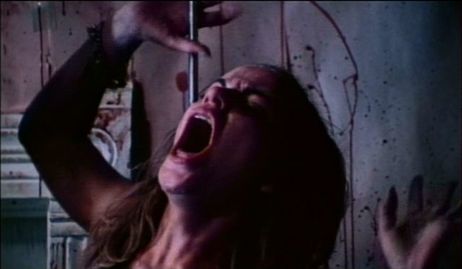

But there's another history less heard: of Chain Saw's role as a product of Austin in the early Seventies, as a creation and expression of the counterculture, as a screaming response to the redneck cowboy culture that dominated Texas. This was guerrilla filmmaking at its most extreme, and the tales of the merciless shoot – zero budget, the hellish final 27-hour day surrounded by stinking, rotting meat, and the endless feuds in its aftermath – have been told and retold a thousand times. Using what Henkel called "nightmare syntax," the film became a metaphor for the bloody outside world having its vile way with Austin's hippie dream. But it also changed how Texas was seen and depicted in movies: violent, febrile, the rural past and the modern urban dream clashing. It proved to other filmmakers that they could do it too. It was the first genuine and successful Lone Star State indie. Forty years on from its first screening – Octo– The Texas Chain Saw Massacre is a horror landmark and a turning point in Texas cinema. A bunch of hippies making a zero-budget feature on 16mm had no business making one of the most revered horror films of all time. By the Sixties, indie filmmaking was starting to blossom, but like the studio system, it clung defiantly to the coasts. Multiple retellings of the siege at the Alamo built the legend of the valiant frontiersman, while Giant drenched the cowboy in oil. The film was written and edited in the shadow of the UT Tower (the site of Charles Whitman's deadly shooting spree only 8 years before), and shot in what was then rural central Texas: Bastrop, Leander, Round Rock.įilms had been made in Texas prior to Chain Saw. Ed Guinn, the wrench-throwing truck driver, played bass with Vulcan Gas Company regulars the Conqueroo before starting up Black Maria Trucking.

Edward's in Austin and waited tables to pay rent on her 22nd Street apartment. Teri McMinn, who played the ill-fated Pam, was almost a UT student herself, but after the drama program refused to transfer her credit hours from Trinity University in San Antonio, she took classes at St. Director/co-writer/co-producer Tobe Hooper, co-producer/co-writer Kim Henkel, Leatherface actor Gunnar Hansen – all were UT grads. The Texas Chain Saw Massacre is an Austin film. One of the first images in 1974's The Texas Chain Saw Massacre is the icon of Austin as roadkill. Madness in the Lone Star State: The Texas Chain Saw Massacre (Image courtesy of Dark Sky Films)Ī dead armadillo in the middle of the highway.


 0 kommentar(er)
0 kommentar(er)
